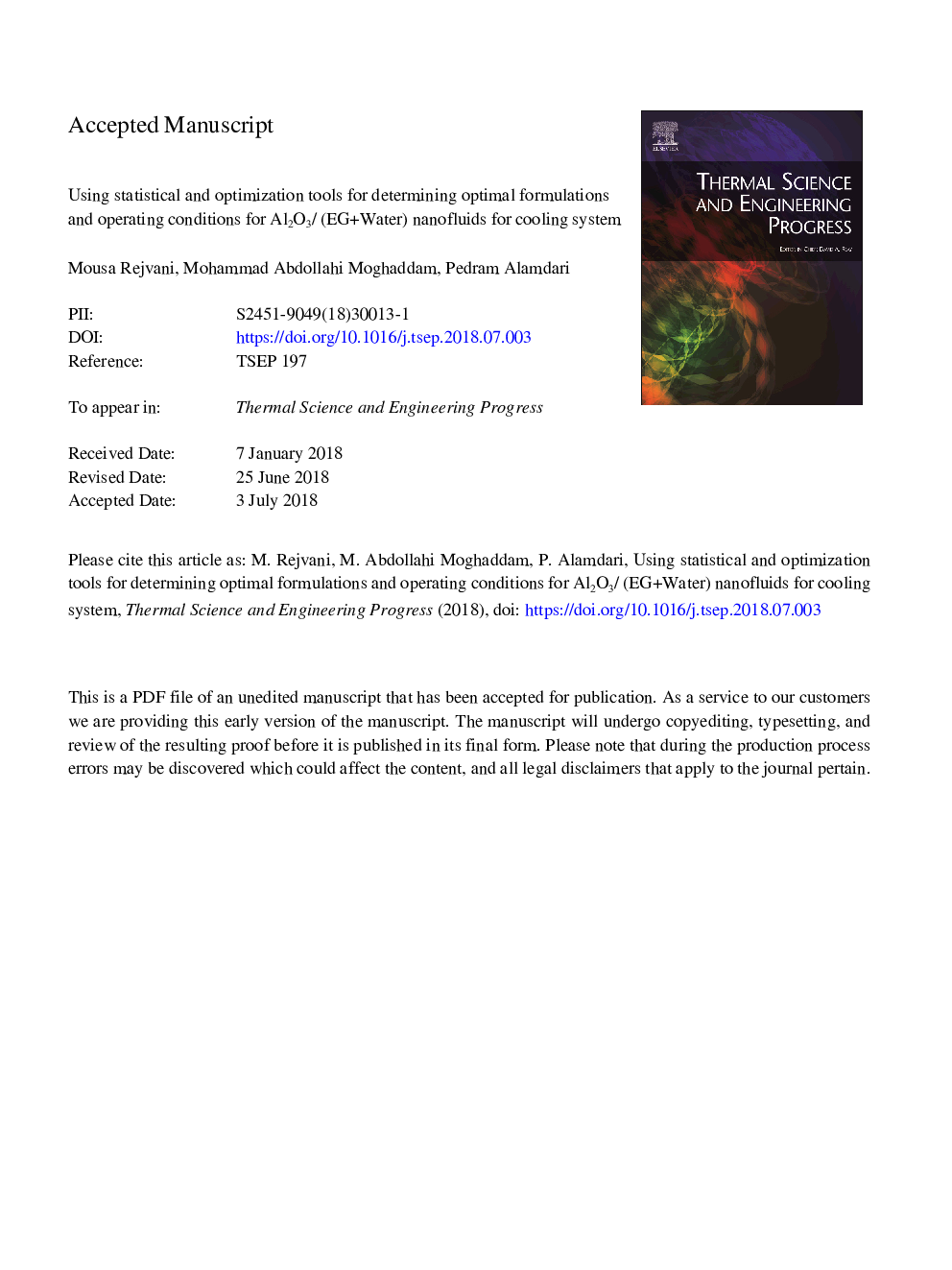| Article ID | Journal | Published Year | Pages | File Type |
|---|---|---|---|---|
| 8918676 | Thermal Science and Engineering Progress | 2018 | 38 Pages |
Abstract
In this research, Al2O3/Ethylene Glycol-water (40%-60%), Al2O3/EG-water (20%-80%) and Al2O3/EG-water (60%-40%) nanofluids have been optimized in various volume fractions and temperatures for heat transfer functions. The volume fractions between 0 and 1.5% and the temperatures between 20â¯Â°C and 60â¯Â°C were considered as designing variables, while the goal was reducing the dynamic viscosity and increasing thermal conductivity of nanofluids. Modeling the goal functions was conducted by presenting mathematical correlations for the viscosity and thermal conductivity of the mentioned nanofluids in terms of temperature and volume fraction. The modeling was performed by Non-dominated Sorting Genetic Algorithm (NSGA-II) so in order to obtain the optimal points of the designing, mathematical correlations were connected to optimization algorithm. By performing optimization, the optimal points were obtained for all the nanofluids for each volume fraction and temperature. These points showed the highest heat transfer coefficient and the lowest viscosity. In order to use the results of this study, some correlations were presented for the most optimal nanofluids. Through utilizing these correlations, a designer can determine the best temperature, volume fraction, and percentage of base fluid mixture according to his need and the significance of each of the goal functions.
Related Topics
Physical Sciences and Engineering
Energy
Energy Engineering and Power Technology
Authors
Mousa Rejvani, Mohammad Abdollahi Moghaddam, Pedram Alamdari,
